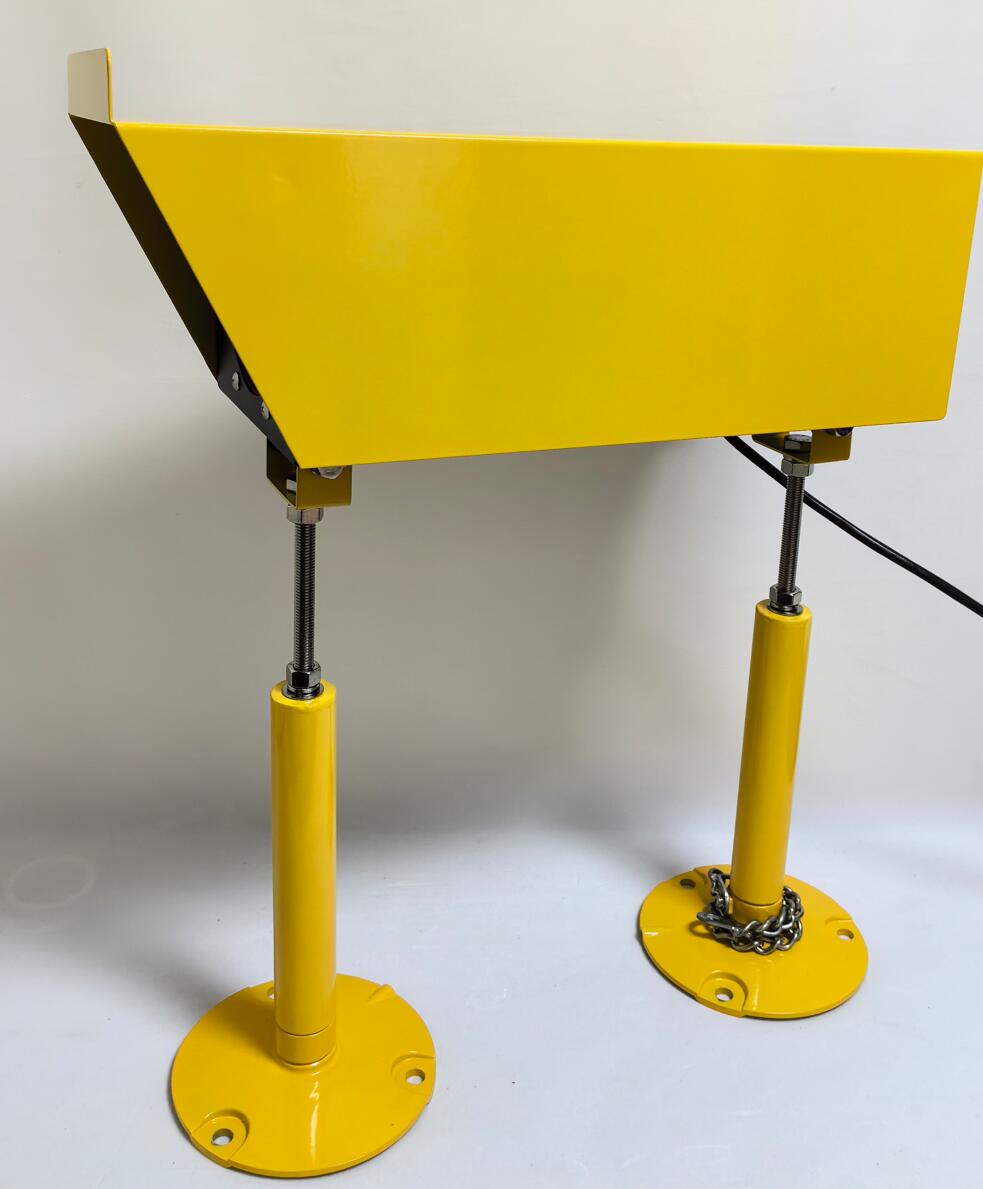HAPI Light: Guiding Safer Helicopter Landings with Precision Illumination
In the demanding world of vertical aviation, safety and precision are not optional—they are essential. Whether it's a military helicopter approaching a desert landing zone or an air ambulance navigating toward a hospital rooftop at night, the need for reliable visual cues is universal. Enter the HAPI light, a compact yet powerful tool designed specifically to aid pilots during helicopter approaches and landings.
This article delves into the design, function, and applications of the HAPI light, and why it continues to be a critical asset in aviation infrastructure worldwide.
What Is a HAPI Light?
A HAPI light, short for Helicopter Approach Path Indicator light, is a specialized optical system that helps helicopter pilots maintain the correct glide path during approach. It provides real-time visual feedback using a beam of light with color-coded signals, ensuring pilots approach the landing pad at the optimal vertical angle.
Unlike fixed-wing aircraft approach systems like PAPI (Precision Approach Path Indicator), the HAPI light is uniquely configured to suit the vertical descent patterns and maneuverability of helicopters.

How It Works
The core mechanism of a HAPI light is based on the emission of a narrow beam of light divided into zones. Each zone displays a specific color, which the pilot interprets as follows:
Green: On the correct approach path.
Red or Amber: Below the optimal glide path.
White: Above the ideal descent angle.
By adjusting flight attitude based on these colors, pilots can align themselves with the correct vertical approach, reducing the risk of undershoot or overshoot—especially in tight landing spaces.
Key Features of a Modern HAPI Light
1. Customizable Glide Angles
Modern HAPI light units can be calibrated to support a range of approach angles (typically 3° to 12°), depending on the operational environment, such as offshore platforms, urban helipads, or mountainous terrain.
2. High-Intensity LED Output
LED technology provides consistent brightness, long operational life, and low energy consumption. HAPI lights are visible in various conditions, including fog, rain, or direct sunlight.
3. Weather-Resistant Design
Built for harsh outdoor conditions, HAPI lights feature sealed enclosures, corrosion-resistant materials, and vibration-proof housing, making them ideal for marine and desert environments.
4. Remote Control and Monitoring
Some models offer remote access to adjust brightness, conduct diagnostics, or control the unit based on time of day or meteorological inputs.
| HAPI Light |
Where HAPI Lights Are Used
The versatility of the HAPI light makes it essential across a wide spectrum of vertical flight operations:
- Offshore Helidecks
In the oil and gas industry, helicopters routinely land on platforms surrounded by open sea. A HAPI light ensures a safe and controlled approach, especially in adverse weather or low visibility.
- Hospital Rooftops
Air ambulances require rapid yet safe landings. Rooftop helipads equipped with a HAPI light offer visual assurance during high-pressure operations, day or night.
- Military Bases
Field conditions and night-time operations make HAPI lights a necessity for military aviation, ensuring safety without relying solely on electronic instruments.
- Remote or Rugged Terrain
In mountainous or undeveloped areas, HAPI lights provide critical visual guidance where natural landmarks are minimal or unreliable.
Benefits of the HAPI Light
✅ Enhanced Pilot Situational Awareness
Real-time color feedback enables pilots to make precise altitude corrections during approach.
✅ Simplified Landings in Confined Areas
Whether between buildings or atop offshore platforms, the HAPI light helps pilots land with accuracy in tight spots.
✅ Reduced Risk of Accidents
By minimizing human error and guiding safe vertical paths, HAPI lights contribute to lower rates of approach-related incidents.
✅ Minimal Maintenance
LED-based HAPI lights are highly durable, require infrequent servicing, and consume little power, especially when solar-powered or integrated into automated systems.
HAPI Light vs. Other Approach Systems
While other visual approach aids like PAPI, VASI, or ALS are common at fixed-wing airports, the HAPI light is tailored for helicopter-specific dynamics:
Feature HAPI Light PAPI/VASI
Designed for Helicopters Fixed-wing aircraft
Approach angle Steep, variable Standard glide slope
Size and installation Compact, localized Longer runway layout
Ideal locations Helipads, rooftops Airports, runways
This specialized design makes the HAPI light a better fit for vertical takeoff and landing (VTOL) operations, especially in space-restricted or elevated environments.
Regulatory Standards and Compliance
Organizations such as the ICAO, FAA, and regional civil aviation authorities provide guidelines on HAPI light installation, including:
Recommended positioning relative to the landing zone.
Intensity levels and beam spread.
Angle calibration for site-specific approach profiles.
Night and daytime visibility requirements.
Complying with these standards ensures uniformity in aviation safety and guarantees compatibility with pilot training protocols.
Future of HAPI Light Technology
As the aviation industry transitions into urban air mobility (UAM) and eVTOL aircraft become mainstream, the HAPI light will evolve to meet new demands:
Smart Integration: Linking HAPI lights with vertiport management systems, air traffic control, and pilot navigation apps.
Energy Efficiency: Solar-powered models with battery backups for off-grid locations.
Augmented Reality (AR): Projects to integrate HAPI data into AR helmet visors for enhanced situational awareness.
In the near future, HAPI lights may also support autonomous drone and VTOL aircraft operations by serving as visual landing cues that align with onboard navigation systems.
The HAPI light is far more than a simple landing aid—it is a vital component of modern helicopter safety. Its precision, reliability, and adaptability make it an indispensable tool for pilots operating in challenging environments, from busy cities to offshore installations.
As aviation technology advances and the skies welcome new forms of air transport, the HAPI light will remain a beacon of visual guidance, lighting the path to safer and more efficient vertical landings around the world.
